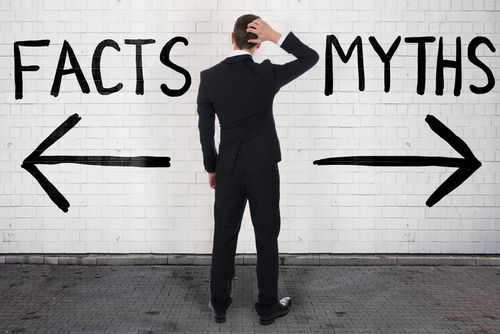 Saving energy is always a good thing—both for the planet and for your bank account. The problem is that there’s a lot of misinformation out there about the best ways to do it. In this blog post, we’ll set the record straight by busting 10 common myths about energy efficiency.
Saving energy is always a good thing—both for the planet and for your bank account. The problem is that there’s a lot of misinformation out there about the best ways to do it. In this blog post, we’ll set the record straight by busting 10 common myths about energy efficiency.
Myth #1: Turning up your thermostat will heat your home faster.
Your heating system is designed to produce heat at a constant rate—which means that setting your thermostat for a higher temperature won’t heat your home any faster. What setting a thermostat higher will do is give you a higher heating bill, because your furnace or boiler will work longer to reach your desired temperature. (The same premise holds true with your air conditioning, by the way!)
Myth #2: Handwashing dishes saves water and energy.
Today’s ENERGY STAR® dishwashers are designed to operate with extreme efficiency, using about as much hot water as you’ll use in less than five minutes of handwashing. A high-efficiency dishwasher unit uses somewhere around 1.5 kWh to run a load of dishes—an average cost of about 17 cents per load, depending on the cost of electricity in your home.
Myth #3: Leaving a light on saves more energy than turning it off and on.
While it is true that the burst of energy needed to turn on a light uses more energy per unit of time than operating it, that burst only lasts a fraction of a second. If you’re going to be out of the room for more than 15 minutes, it’s more efficient to turn the light off and then back on than to leave it on.
Myth #4: Closing vents in unused rooms saves energy.
This may seem intuitive, but closing vents increases the air pressure in your system, which actually makes your heating system work harder and use more energy.
Myth #5: Using space heaters is always more efficient than using central heat.
You might think it’s more efficient to lower the thermostat throughout your house and use a space heater only in the room you’re using. The efficiency of this approach depends on the efficiency of your space heater. Many portable electric heaters use a large load of energy to run, so this does not necessarily hold true.
Myth #6: Lowering the thermostat won’t lower my bill very much.
According to Energy.gov, you can cut 5% to 15% of your energy usage by lowering your thermostat by 8 to 10 degrees for 8 hours a day (when you’re asleep or out of the house, for example).
Myth #7: Appliances don’t use energy when they’re off.
Most appliances continue to draw power even when they’re in “off” mode. (This is often called “vampire” or “phantom” power.) Want an easy workaround for this unnecessary energy expenditure? Use a smart plug or Tier 1/2 power strips—you can program them to cut power to appliances overnight or whenever you aren’t using them. By the way, your laptop is an energy vampire even when it’s in sleep mode, so unplug it when you’re not charging. And your monitor typically uses about twice as much energy as your desktop CPU, so don’t forget to shut that one down, either.
Myth #8: Fluorescent bulbs are more energy efficient than LED bulbs.
While fluorescent bulbs offer better efficiency than incandescent bulbs, LEDs still win the day in terms of energy efficiency.
Myth #9: Newer homes are always more energy efficient than older homes.
Although many new homes are equipped with higher-efficiency appliances, you can upgrade an older home with similar appliances and get similar results. Upgrading insulation to recommended R-values and installing new double-pane windows and doors can often raise an older home’s efficiency rating enough to put it on par with that of contemporary homes built to today’s high standards.
Myth #10: Ceiling fans can only be used to cool a room.
We usually think of ceiling for cooling, but in the winter, a ceiling fan can help heat a home more economically as well. Most fans have a switch that allows you to reverse the motor and operate the ceiling fan in a clockwise direction. You can use this function to force warm air near the ceiling down into the living space.
The truth about saving money on your electricity or natural gas bills is that it’s easy to do when you switch to Discount Power! Contact us to learn more, or enroll online today.